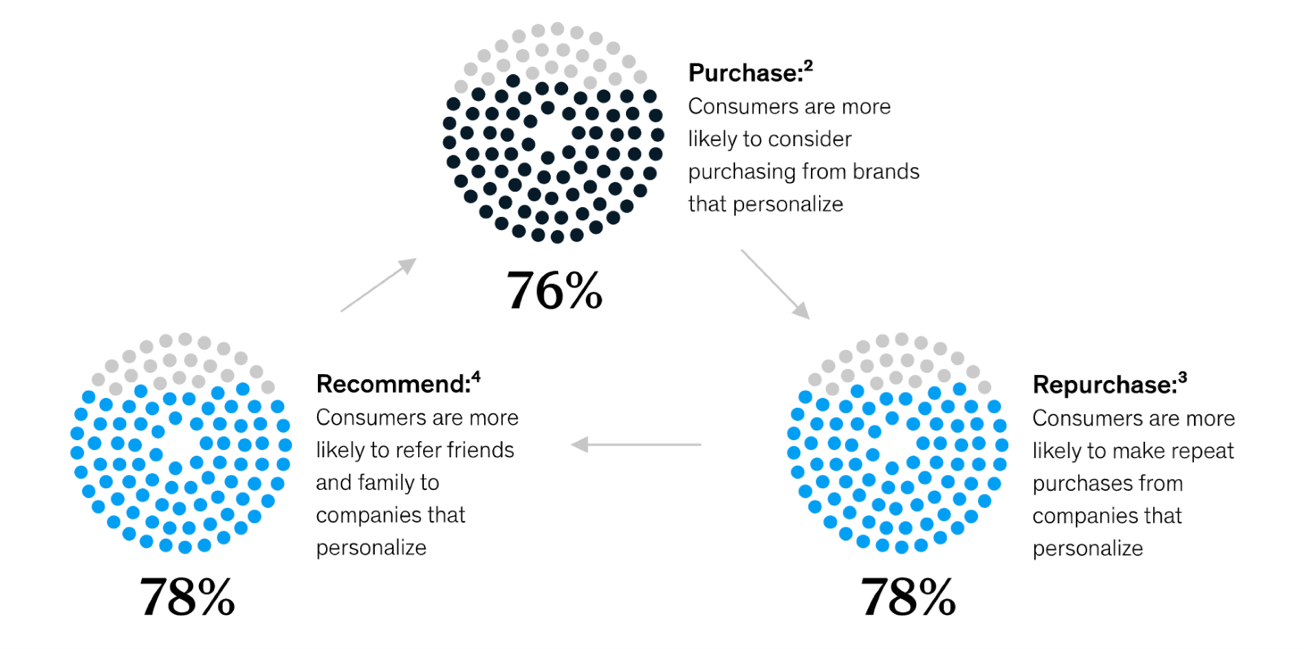08.16.22 By Bridgenext CX Team

The post-pandemic surge of digital commerce and virtual experiences coupled with the move to a cookie-less world make a company’s ability to leverage data to personalize both digital engagement and touchpoints more crucial than ever before. A Boston Consulting Group (BCG) study reports that 72% of North American customers said they would stop buying from a company or using a service because of privacy concerns.
The initial, fear-based reaction to a cookie-less world is slowly giving way to optimism, as organizations realize what Bridgenext (formerly Definition 6) has been advocating all along—that this is an opportune time to begin building databases of higher-engaging, active consumers. For example, ~78% of customers are more likely to purchase, repurchase and/or recommend companies to friends and family for brands that personalize.

Introducing or deepening personalization efforts expands the opportunity for companies to be transparent with their customers about the mutually beneficial use of their data, which builds trust and alleviates some of the privacy concerns. In a study conducted by Axway, 60% of people globally find value in allowing companies to access their personal data, if it means a better experience. In that same study it was found that 45% of U.S. citizens feel that companies are transparent about data use, higher than the global benchmark of 37%—meaning consumers want privacy and control over their data along with greater transparency, as well as the ability to engage closely with brands that they have a high affinity for—all of which personalization enables.
Bridgenext focuses heavily on how best to utilize first-party data to provide impactful and high-performing consumer experiences (CX). To thrive in the fast-approaching cookie-less environment, companies should expand emphasis on and allocate budget to stronger customer acquisition efforts into owned digital environments. Brands should also focus on growing and nurturing their existing databases, deepening relationship-building through personalized, relevant CX.
This begs the questions for many brands: “Are we truly leveraging the data that we have to attract more qualified customers?” and “What additional efforts are required to acquire new audiences, and what will the financial impact be in terms of sales and customer lifetime value?”
A few best practices and areas of consideration include:
The fact is that today’s marketers and customer experience professionals should be heavily investing in avenues that allow them to push relevant, targeted content and marketing campaigns that help customers and prospects make informed buying decisions, based on zero-party or first-party data.
While a third-party cookie-less world does have major implications for companies, we believe it will be a service to consumers, and an opportunity for organizations to strengthen their relationships through data transparency and the delivery of relevant effective communications to their audience—now more than they ever have before.
References:
media-publications.bcg.com/BCG-Executive-Perspectives-2022-Future-of-Marketing-and-Sales.pdf
www.mckinsey.com/business-functions/growth-marketing-and-sales/our-insights/the-value-of-getting-personalization-right-or-wrong-is-multiplying
blog.axway.com/commentary/global-consumer-survey
www.mckinsey.com/business-functions/growth-marketing-and-sales/our-insights/next-in-loyalty-eight-levers-to-turn-customers-into-fans
www.forrester.com/blogs/customer-loyalty-program-cookie-tracking/